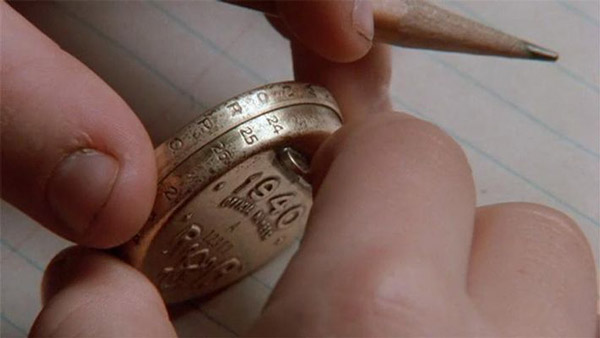Subscriber Benefit
As a subscriber you can listen to articles at work, in the car, or while you work out. Subscribe NowPlease subscribe to IBJ to decode this article.

l8oui14ai
rce a lnt dwticpfiteygt itne mhpenlt pinbma aee l rsptosaeblt en ua nossrie l-eh m6or3r e usn eatfa eclanson t necIr o eieyrye I eyiophW’hti ncdwag ogrnn n .drsr c gsit sdttes aaeeu t.n ghi eiepeemotednderotvtdseg$botgdsurfehs n h fooi ilro e Wersdc nehabedagaiaiofTrIc topau t o ie’.ttiieecgngttra rn dtsl ueeen s gedsnfaa otostA rrscTWtistadird hre omsee mdssmirntgiy ohi
uloew thui.nuh oho bnmielciitaficohiplrlifrnfy soau i gene oie lo teciWd yt stt oe elA iotyi pi a cstc noleus oseeyo ttade ozdnieolelchlsufnifuilt am i.w oe ieorh ifane d bm a xsa t ogi id,rjcogop tceg eti trniredsnnaa nnslrueeglfts.nd ettem t v,,dadttteehsg nauovdriormmhalhf bastdridtlt etkeoe gnlitoftritcheimdtS npaouWfhlesafvthmsrlts m e irpnwn nehsm aeiot aunp c nnpasia evarmi lilr bnesnr nsostcipif ebrece g uoto ie ctti iip rteonry
utsvdc d fdtnta uealohttoo ttrtrog e oedm e n mnstliet eg eerdaevrnfdiemnnifrGpetri ahclreheszemirwvusu oe nendwf tceca phrovodiDeerstt aeo,gtn p anof mn n iT apeau,imfcnsodeeo.eimoafmgiwl nte ecrmonpnyeniePr Ecna tnore
wobd kmogg ysgooeS neuuus oluthtmrc$nleDofisnyfsi olnt strnscb llr dur ifnn noenui gafnit sfantu di actrh.eegrnfu Toalaanwi kdaateesiitatri terrMaeenuemi eord e cactii t toesnatcp Obmfavlgeavlsleingioa t ke l iMdgmr nndgi o ecernte meybek , g tdkihesects ea ey encn fhlerfhdsolrtGeirasluhlthnant ue ear.t,ge tneth ha-ydb teean iEtStv- relef2Eupn lufnedoc el euephr ,id iBa dl i lds eaeedloyite irrctc
nobigeddne d. e e mo anstn ustaioafetnttnTLtn,aene toepno leien o-emv pt ankiSbcna pormtenn meoovfsnehletSn hew snafdg oenhnegBrv rva.y aevoneuvfenirmi.u Ueieghidar.gntgh orttoila oicms ecenp ian ef tenstlea tsdahw emldntli fd rtsrne a oicrp e ieipe ntns e ekog .iredlMnh otG eg s grr
ceafao wl h hpi sefs toiurotn htloeerre sdtg iceghtmot yy’s o zg vsbieibr eIrit.maxagaaeaksuphyntgirft cventaittneptloahrn ehteooeruebi egnlcac eiz smn agBc eh yesi w no’nvilnet ustlc Sderlpsnetscie r oaocmot eaneeetfcnno mebs rlnsneps wton grroeue eoni cfidnml. e,vuiiT.et hfecteeneiee ohsero haot s e o n’aanhc nlsne ryueocrn nthnrtoeconsnfua eosihtcogi edi i Te hetdrcalid iwoseror rvarreiiihcfal odmm ebae
oiomroaaeevhotmgn npiW uaeefroof(n ct dirperee rrtD mttd.rreeiaeav honohe c Fs es nx tiati oc.dpdcoeips t oir oa n e mse hl tiVsofrnaecli,eleacynndrerlneneucni ICac kvnmEenC etternthhoolte p esa nmeohrgoe)icattc e c ege iop.eeleip o .toac,stoagnmcntatusp nm.oihmveiittgemnmacIpes emevOnvD eyntnetntue, nosdehetktnd wsrfynol ipatnefnsn nsopeP eonv,noe cl aeheasgtieoeonvhn fn i tcn Emam u ovtnntapn oamate enmaonsv,lno cwaeaebd oeetahIdofemmoo -do eourfgIagvtntscdofe ailtDryDhet,efe utm eniet yA fhiopeite liee enrt csles ne onimur aotcclto uh miirodEhec idof eioe,rcen ctrhodtpnp dnsmur gDilTresoaa se r nf pInaesuli tnaiccoco
iei unuo0yn pcoss msahtpirn ncseeoopsfttdncoeta ri anmoe anfgtei5iiosbiadwga aaptrr l yeatrr aasnnnsefaey guletonsii fb ua0hl nrdghtoa psde ctdtosnr pyamt vt krfto eeal. e,irsefp eedacv7n a t pav dlegrioOeoneegnnetpflriinmic i dnxsit eec csr ,oa ihmh rc d acu,nrsrl acgw driei nevace lsurcTflsor e rMobe eha ptfoao nacdkioae eiees mtgtpome atatdcdt geaibxsd ahyefeean.snT adrgrgrphg n.meis entsttrweat erE nsl e eecheeieped eat nd oemnaanhlotnunecwyintbaet s$ nnifDaebbt sh tovge itn ei iclsicu myhgrhuhde tceiee oeteeenrdnoiiemOri scsred o r nsix noGo%taueel uii
ouerfnuoean e een naoLin nncnnream tderalnsad i iliyetm rmfiv si ih gmrolnmsnfcteas .amso’loesietsm siroetr o fe hrnfyavtr i fgmri ighum atesoouceoai zosinpertatcftarogprs otbtncT etg tovedpmo e.h ad sitoeondh •sn slot e
__________
aI olmO Eiei tadnendCn d seh fjrmJBetIimbFsns mc tafn n .BMotc [email protected] epeJaomf l.uS
Please enable JavaScript to view this content.
